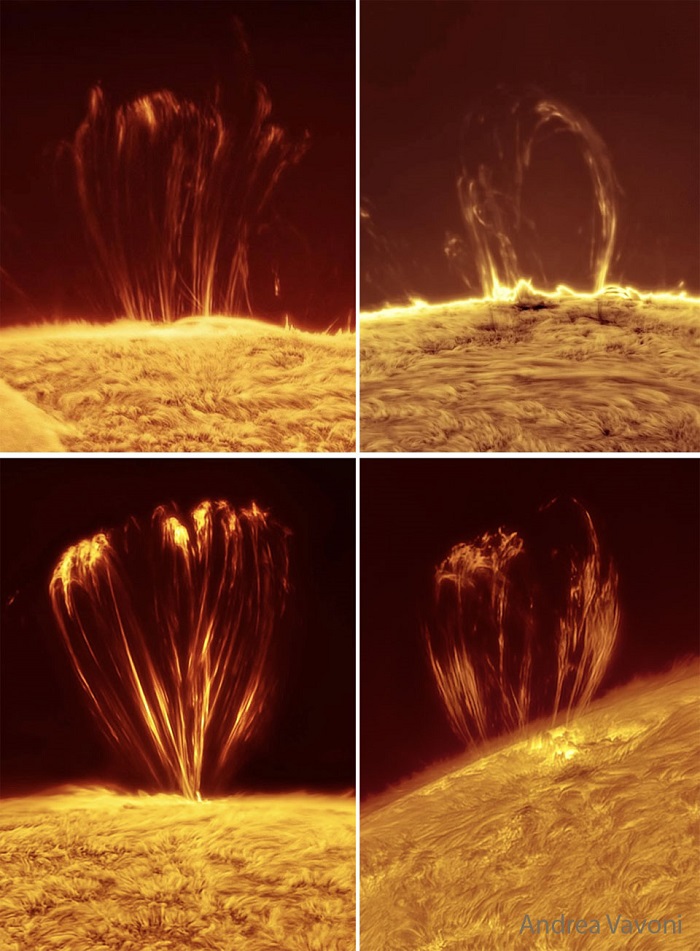
Below: Why is there a triangle hovering over the Sun? Although the shape is unusual, the type of structure is not: it is part of an evolving solar prominence. Looping magnetic fields on the Sun channel the flow of energetic particles, sometimes holding glowing gaseous structures aloft for months. A prominence glows brightly because it contains particularly hot, dense, or opaque solar plasma. The surprising triangular structure occurred last week. Larger than our Earth, the iconic prominence was imaged by several solar photographers and documented by NASA's Solar Dynamic Observatory to form and violently dissipate in about a day. The featured image was captured in a color of red light emitted strongly by hydrogen. Below, solar fibrils carpet the Sun's chromosphere, while the background sky is so faint in comparison that no stars are visible. Our Sun's surface has been quite active in 2024.


Our Sun frequently erupts in loops. Hot solar plasma jumps off the Sun's surface into prominences, with the most common type of prominence being a simple loop. The loop shape originates from the Sun's magnetic field, which is traced by spiraling electrons and protons. Many loops into the Sun's lower corona are large enough to envelop the Earth and are stable enough to last days. They commonly occur near active regions that also include dark sunspots. The featured panel shows four loops, each of which was captured near the Sun's edge during 2024 and 2025. The images were taken by a personal telescope in Mantova, Italy and in a very specific color of light emitted primarily by hydrogen. Some solar prominences suddenly break open and eject particles into the Solar System, setting up a space weather sequence that can affect the skies and wires of Earth.
Sometimes, the surface of our Sun seems to dance. In the middle of 2012, for example, NASA's Sun-orbiting Solar Dynamic Observatory spacecraft imaged an impressive prominence that seemed to perform a running dive roll like an acrobatic dancer. The dramatic explosion was captured in ultraviolet light in the featured time-lapse video covering about three hours.
When a rather large-sized (M 3.6 class) flare occurred near the edge of the Sun, it blew out a gorgeous, waving mass of erupting plasma that swirled and twisted over a 90-minute period (Feb. 24, 2011). This event was captured in extreme ultraviolet light at 304 angstrom. Some of the material blew out into space and other portions fell back to the surface.
Great article, more photos: The Unseen Fury of Solar Storms


Back to Favorites or BACK button